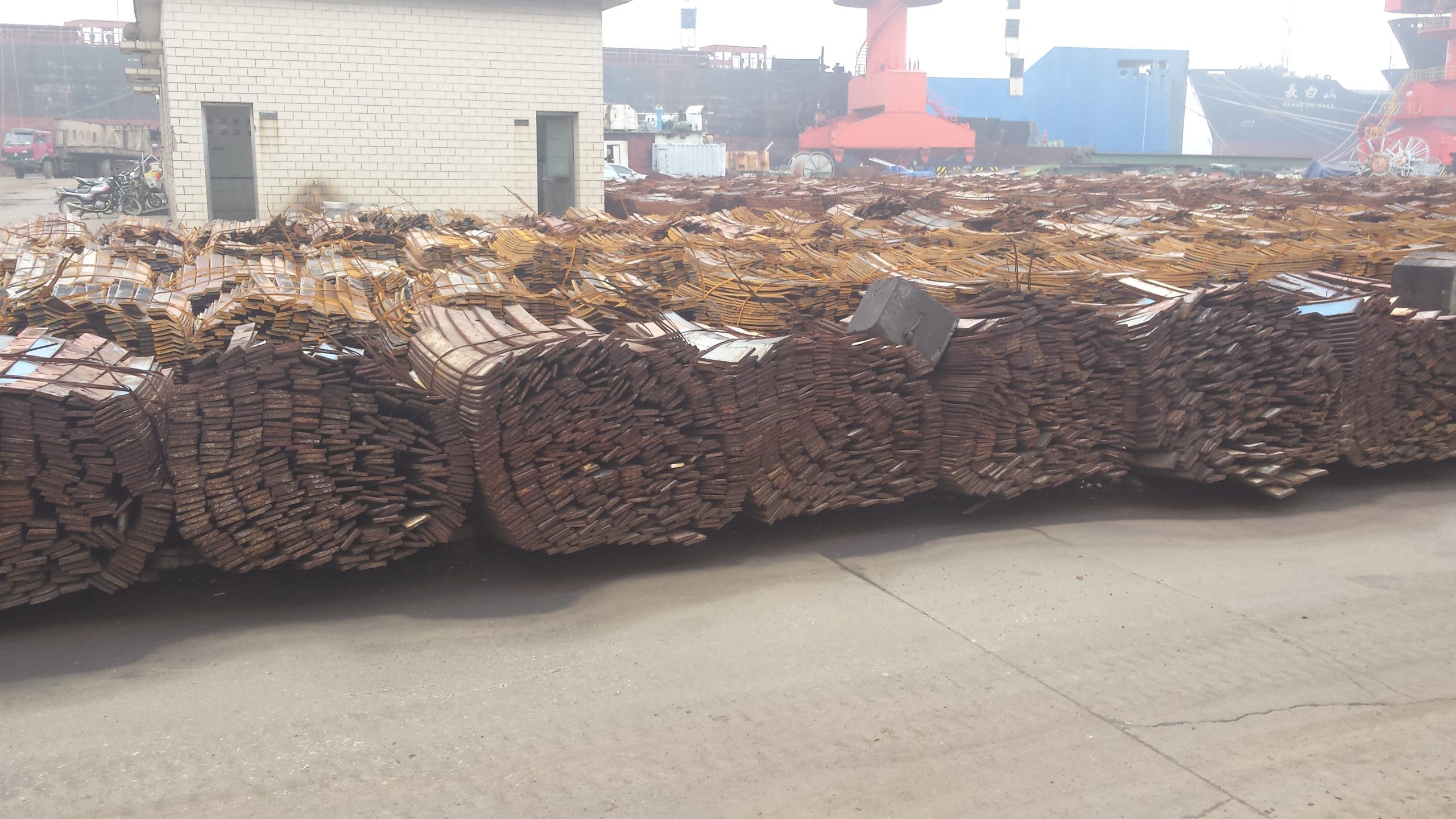Ships that have reached their end-of-life are sold to recycling yards. For commercial reasons, most of the large ocean-going vessels are dismantled on the beaches of Bangladesh, India, and Pakistan. Plasma gasification is a waste-to-energy technology that may help increase the prices offered by green shipyards.
Ship's graveyard in Mauretania. (Photo: Sebastián Losada, Wikicommons)
Powered by a high current electric arc, a plasma reactor contains a plasma of more than 10,000 degrees Celsius. At this high operating temperature, all molecular bonds of organic material entering the plasma reactor, including organic pollutants such as dioxins, are broken down. This process converts them into synthetic gas, a combination of hydrogen (H2) and carbon monoxide (CO). Inorganic material entering the reactor is melted and turned into chemically inert slag and reusable metal. The emission of volatile metals and hazardous gases is minimised by reactor design and process control.
 Steel strips as product of ship recycling. (Photo: Jeroen Pruijn)
Steel strips as product of ship recycling. (Photo: Jeroen Pruijn)Regardless of where a ship is dismantled, about eighty-five percent of it appears as piles of steel scrap on the quayside. The remainder is a mix of machinery, electronics, minerals and organic material which is either sold as useful components, generating income, or disposed of as waste, that costs money to get rid of. Environmentally friendly disposal is more expensive, especially if the waste is toxic. Dr Jeroen Pruijn, from the Ship Design, Productions and Operations group at TU Delft, investigated the prospects of adding a plasma gasification plant to increase the competitiveness of green shipyards.
 Dr Jeroen Pruijn. (Photo: Martijn Engelsman)
Dr Jeroen Pruijn. (Photo: Martijn Engelsman)The synthetic gas produced by a plasma-gasification plant can be used for the production of energy, liquid fuel or chemical products such as ammonia. The slag can be sold as building material. For a shipyard, a plant like this can therefore generate two-fold benefits – increasing the value of ship waste while not having to pay for its disposal. Taking all investments and operating costs into account, Jeroen Pruijn estimates that the offer price for a ship can be increased by up to a few dollars per deadweight ton. This may attract some shipowners towards green ship recycling. At the moment, however, the excellent market in India for selling useful components has a much larger impact on the prices offered for scrap ships.
Martijn Engelsman, freelance science editor for TU Delta



Comments are closed.